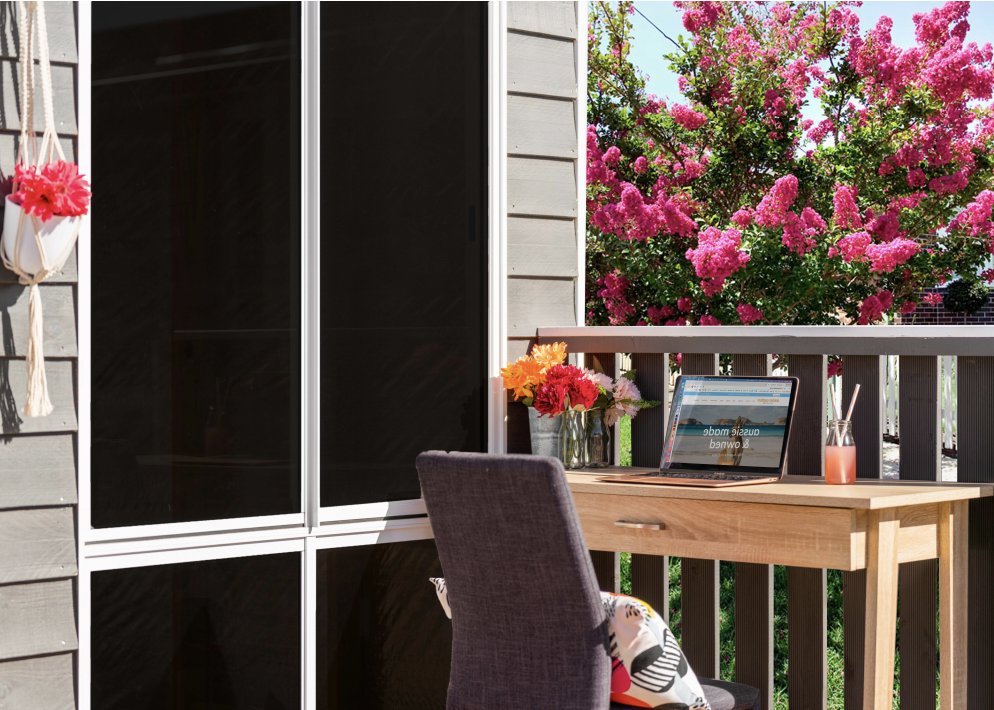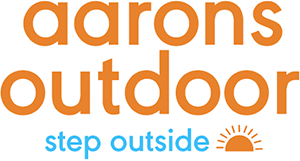Is Working from Home here to stay? According to CNBC and Forbes, it’s more than a passing fad, with many companies trending towards increasing their employees’ productive working hours by removing long commutes and inter-office distractions.
It’s not a new thing, however, as most start-ups and sole traders had previously chosen to work from home to reduce overheads, and others have opted to be self-employed to improve work-life balance and/or spend more time raising a family.
So, what to do when you want or need to work from home, and space is at a premium? Since we are the backyard office experts, our answer is simple: create more usable space in your backyard office! It will:
- Give you a productive and separate home office to earn your keep.
- Add an extra space or room to your house, giving you a tangible asset that will add real value to your home.

We will walk you through the steps to transform your garden into a space that will literally WORK FOR YOU through a series of Frequently Asked Questions:
Q. How do I know if I can get a home office in my backyard?
A. If you have a backyard office, providing your space meets the requirements of Exempt Development, you can almost definitely have a home office in your backyard. It is a quick, simple and cost-effective solution. Best to check with your local council (and read on) to see what other factors are involved.
Q. What sort of planning permission is needed for this type of structure?
A. You shouldn’t need planning permission if the room or shed complies with state and council requirements as an Exempt structure. However, if you are going to have customers or clients come to your home office, this could have an impact on your neighbours and may require planning permission.
Q: Are Backyard Office Pods Practical Or Not?
A. The short answer to this question is yes. Backyard office pods are practical to have. It’s not expensive, and the space is enough for a work setting. You have all the space you need to work effectively and efficiently. Indeed, tiny homes like backyard office pods are the future homes of the next generation, and you deserve to have one.
Need a builder for your backyard office pod? Granny Flat Solutions can help you take that mental floor plan and translate it into your perfect workspace. Whatever your creature comforts, from air conditioning to windows and glass doors that let in natural light to a bathroom, our designers have a wide range of options for you. From colour to materials, we can help with all the details and help make a pod where you’re comfortable to let your creativity flourish in style.
Q. How much space do you need in your backyard office to accommodate a home office?
A. The legislation for Exempt structures varies from state to state, however in general, the size limits are below for urban locations:
- NSW: up to 20sqm (less than 3m in height)
- VIC: up to 10sqm (less than 3m in height)
- QLD: up to 10sqm (less than 2.4m in height)
- SA: up to 15sqm (less than 3m in height)
In an urban area, you also need to make sure that you are at least 900mm away from any boundary fence and are not attached to the main house (there are some additional rules around setbacks from boundaries and dwellings depending on council areas and zoning, such as rural areas, bushfire prone areas and ecologically sensitive land).
Q. Can any garden shed be turned into an office space?
A. Many older structures (especially steel sheds) may not be solid enough to convert into a structure for regular or long-term usage. You will also need to check if any materials contain asbestos within your structure, as this will make it potentially hazardous to make alterations. If your structure is safe, providing that the space is not habitable, you may be able to convert a shed or garage. Always check with your local council to see whether there is anything specific to your area to consider.
Q. Should I consider a newly built home office?
A. Yes – exempt structures are surprisingly affordable and will probably work out cheaper in the long run than converting due to unforeseen variables. But do your homework – It should be a simple process, however choosing a company that knows the exemption rules in your area and specialises in this type of structure will be the best decision you will make to save time and money (or the hassle of removing or modifying if you don’t get it right). A customised yet pre-fabricated option is likely to be the most cost-effective choice.
Q. How much will it cost?
A. Our smallest shed is 1.7 x 1.8m and starts at $2,600 in kit form (delivery, installation and options extra). Our studio range starts from $9,500, with our average customer spending between $17,000 and $20,000. Many of our customers are taking advantage of the Instant Asset Write Off for their home business which provides an immediate offset for this type of purchase.
Q. What are other factors that people need to consider?
A. There is a huge list of considerations, and it will vary because each space and need is unique. We have listed some of the more practical items below:
- Vertical and horizontal space. Think about how much space you need in each direction when deciding on your garden rooms. Ducking under a low doorway or twisting sideways to squeeze past furniture might be OK occasionally, but the novelty will wear off if you are using your space regularly.
- Structural considerations.
-
- Ventilation and insulation (the last thing you need is a freezing cold or steaming hot workspace!), or a lack of fresh air or cross-ventilation.
- Water ingress and condensation. If you have any paperwork or electricals in your room, your worst enemy will be water or dew. Check that your room has sarking or sisalation paper to help reduce temperature change and moisture, and make sure that every nook and cranny is sealed up.
- Shelving. If you are planning on installing shelves in your space, make sure that the wall studs can hold the weight of your belongings.
- Electricals. Ensure your electrics are connected and checked by a qualified electrician, even if you have existing wiring.
- Plumbing. In many cases, water and sewer services cannot be connected to an exempt structure. If this is something you definitely require, it is essential to check this with your local council, as you may require a Building Permit, Complying Development Certificate (CDC) or Development Application (DA).
- Portability. This might not be so easy with an existing structure, but if you are purchasing something pre-fabricated, it should be simple to transport to your next home. Our structures are purpose-built with this in mind, and we regularly relocate our products for customers moving house or who sell them after they’ve finished using them (we do one a week on average).





